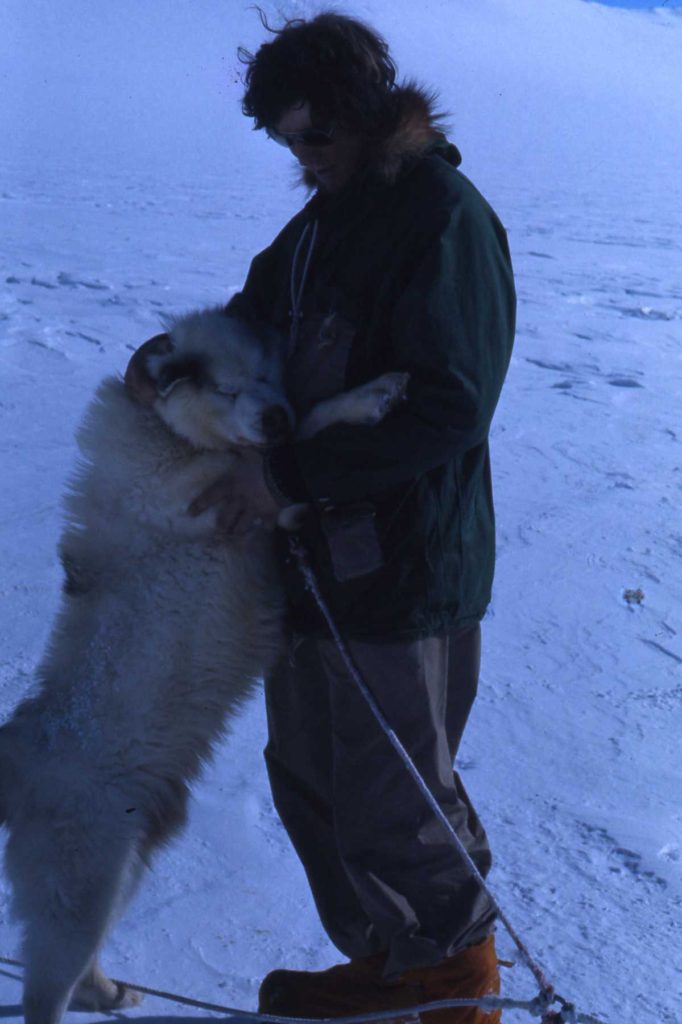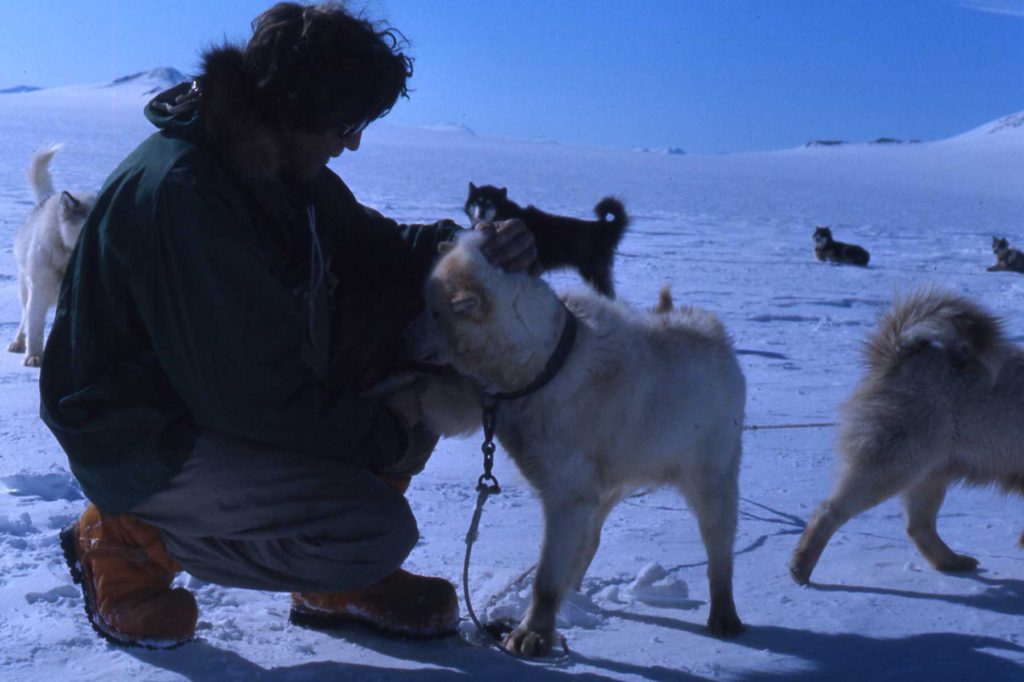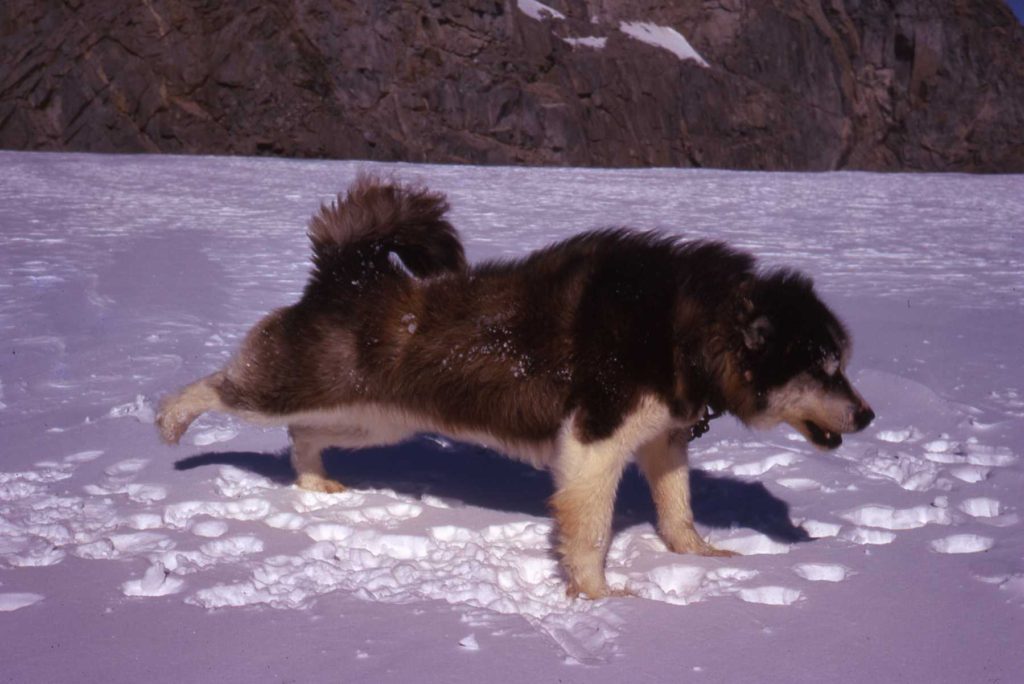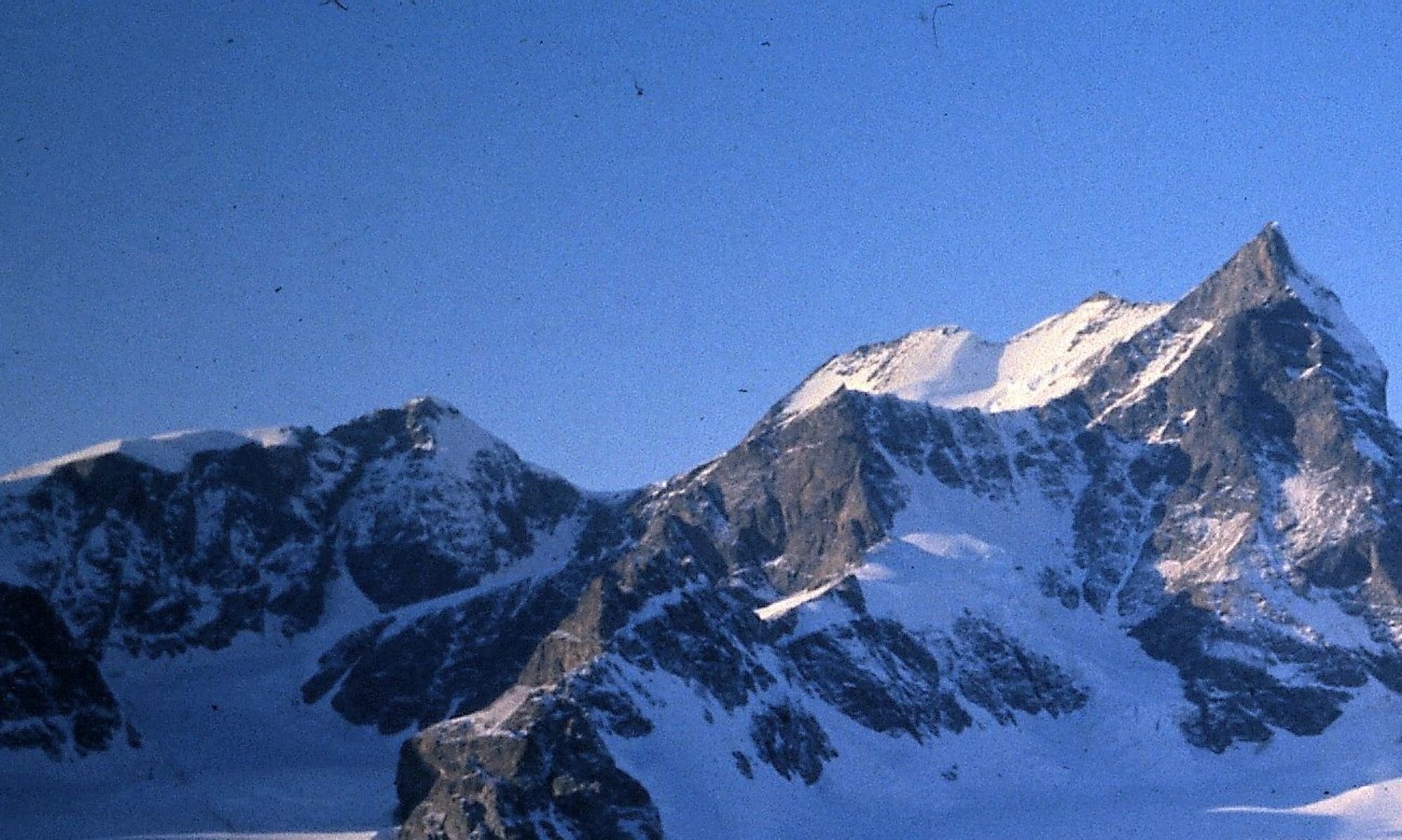The signs were not great when we arrived at Swithinbank Nunatak camp on 5th July 1972. The big hole that had been there on a previous trip was still there with a number of precarious snow bridges for heavy sledges. The camp was also on a load of holes so you had to watch your step.

The following day it was my turn to lead us across the Swithinbank Glacier with a 600 pound sledge – joy! I was following the route of another sledge unit that we had just met the previous day on their way back from surveying the Arrowsmith Peninsula area. I got off to a fast start until I reached the Arrowsmith party’s last camp. Contrast was not good and I suddenly was confronted with a very steep short drop. I had to turn my sledge over to avoid crushing any dogs as I rapidly accelerated towards them. This was the first of four very frustrating turn overs. Continuing on along the Arrowsmith party’s route I entered very heavily crevassed terrain.
The body language of the lead dogs (Dusty, Rocky and Nog) told me this was no place to be so I pulled off the track and headed more for Cornerstone which marked the other side of the glacier and the entrance into the Trough area. The snow surface had deteriorated and it was difficult to progress in the soft conditions. I had not gone very far when the back of my sledge dropped into a huge hole. I had just quickly got off the crevasse and released my dogs from the sledge, when Drummy Small (GA) travelling behind shouted that he needed help to get one of his big dogs out of another hole. At that moment, possibly slightly distracted and having just checked the bridge, I fell into the crevasse up to my armpits. Stupidly I had taken my skis off prior to this. The sledge then dropped again.

Looking down below my dangling legs, the crevasse appeared to narrow about 60 feet down and then all you could see was black. It was deep. This was when I realised the benefits of dog travel. Because I had released my team, I was able to call old Shirl over, grab the trace and pull myself out. Of course I got the statutory face licking as I climbed back onto the surface. It was a close thing and I can only wonder how things would have ended up without the dogs.
Needless to say, in true FIDS style, with a bit of help securing and unloading my sledge, I was on my way again having only lost one box of dog food down the crevasse. Although I still had problems with holes even with John Yates (Surveyor) carefully ski leading my team out of the danger we eventually made Cornerstone camp safely. I learned later that the Arrowsmith party had travelled through that crevassed area to their camp in the dark. How lucky were they? I swore I would stick to my old tried and tested route next time.

This story was just one example of the many reasons why I grew to love dogs as a way of travelling in Antarctica. Over the two years they got me out of many a scrape, often against the odds, whilst providing excellent company and wonderful entertainment along the way.
Dave Singleton (Geologist)
Stonington Base E 1972 and 1973
